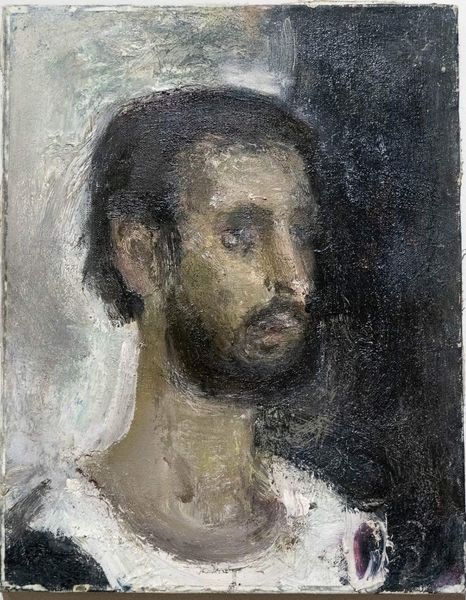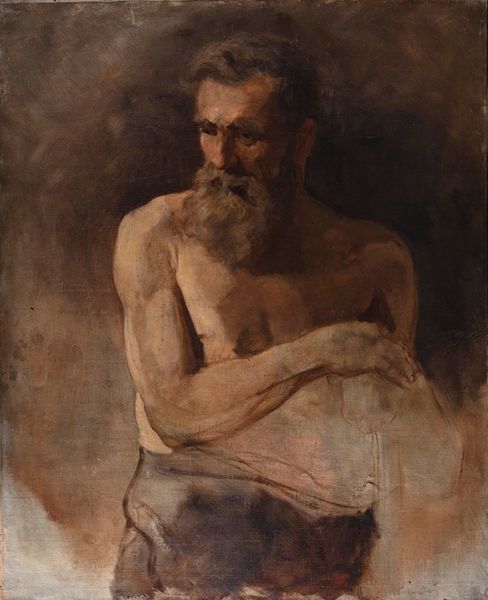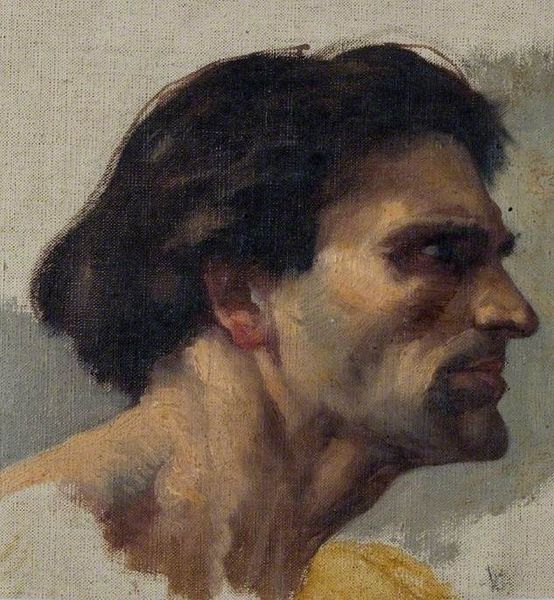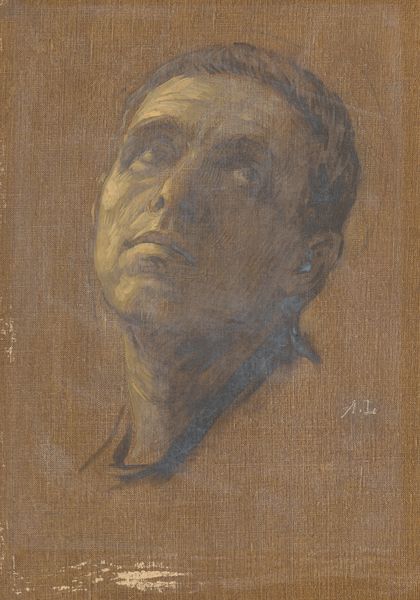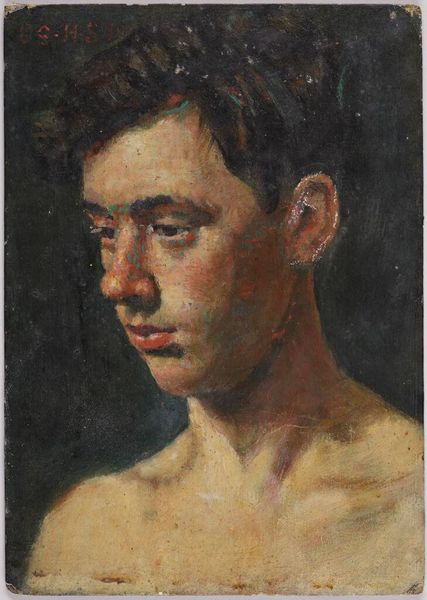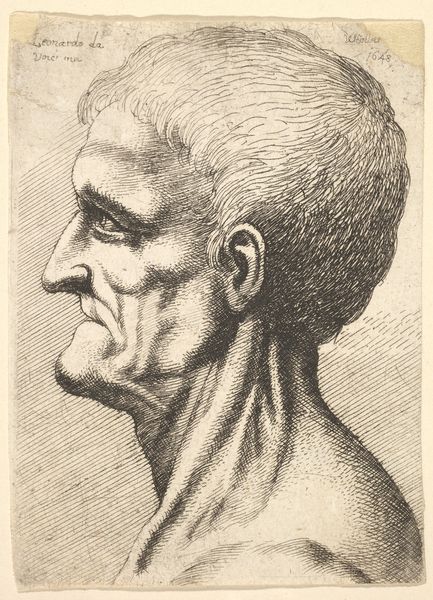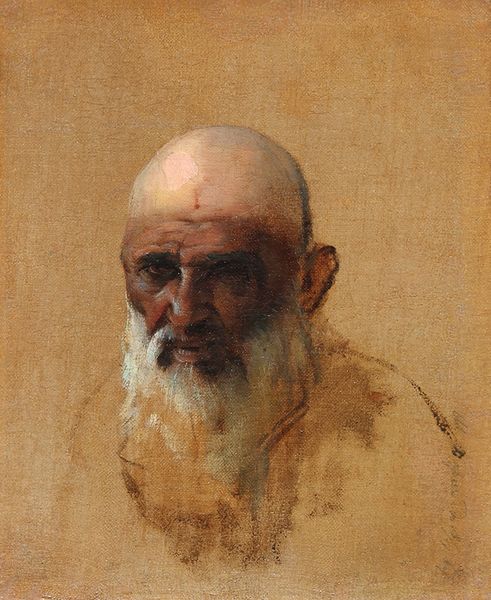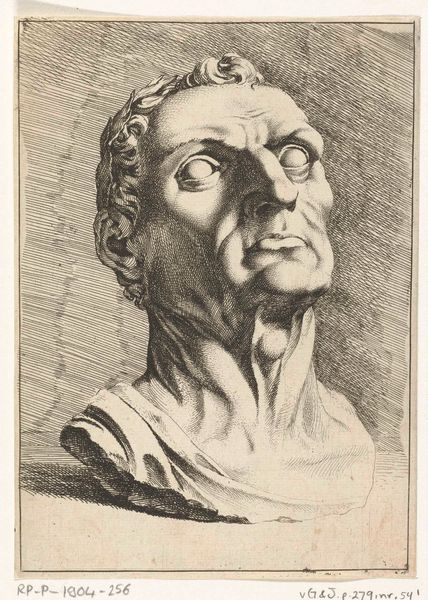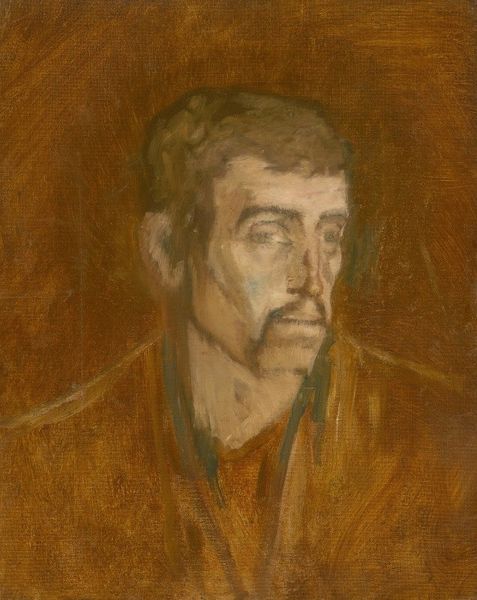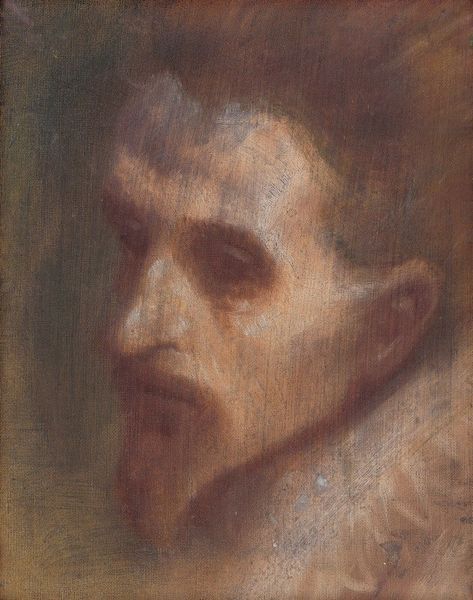
Head of a Shipwrecked Man (study for the Raft of Medusa) 1819
0:00
0:00
theodoregericault
Musée des Beaux-Arts et d'archéologie de Besançon, Besançon, France
oil-paint
#
portrait
#
head
#
portrait
#
oil-paint
#
figuration
#
portrait reference
#
male-portraits
#
portrait head and shoulder
#
romanticism
#
animal portrait
#
human
#
animal drawing portrait
#
portrait drawing
#
history-painting
#
facial portrait
#
forehead
#
portrait art
#
fine art portrait
#
digital portrait
Dimensions: 37.3 x 46.5 cm
Copyright: Public domain
Curator: Before us, we have Thódore Géricault’s study, "Head of a Shipwrecked Man", completed in 1819. It's an oil on canvas, and you can find it at the Musée des Beaux-Arts et d'archéologie de Besançon. Editor: My initial impression is one of profound weariness. Look at the subtle lighting, accentuating the gauntness of his face. He seems burdened by immense suffering. Curator: Indeed. Géricault painted this study as preparation for his monumental work, "The Raft of the Medusa". These weren't just any models. Géricault visited hospitals and morgues. It’s fascinating to consider his process – observing mortality firsthand to inform his depiction of human desperation. The raw materiality of death is embedded in the painting's production itself. Editor: The man's gaze… It's almost as if he is staring beyond the immediate horror. I wonder, is there a symbolism of hope mixed with despair? His lifted gaze directs my focus upward, suggesting transcendence amidst the obvious devastation. The barest hint of light catching his eye—a beacon in the surrounding gloom. Curator: That hint of light serves perhaps to remind the viewer of his humanity, wouldn’t you say? I mean, this piece serves as both an aesthetic creation but also a potent document of the human cost of the Medusa tragedy, underscoring how societal failings manifested in individual suffering. He transformed a news story into a stark and memorable indictment, accessible to viewers across class boundaries because it depicts universal human struggles under the surface of politics. Editor: Absolutely. And the way he rendered the head against a dark, almost undefined space emphasizes isolation and anonymity, almost as though he were chosen to represent every person that died that day. One has to ask: is this individual a symbol for others? It definitely holds weight as a timeless depiction of tragic suffering, more than only documenting something horrific. Curator: Precisely, its lasting power stems not just from its historical context, but from its examination of those structural conditions. Editor: It will keep the tale alive with such strong iconic figures that represent more than any individual or fact ever could. Thank you, it gives us an extraordinary insight!
Comments
No comments
Be the first to comment and join the conversation on the ultimate creative platform.
